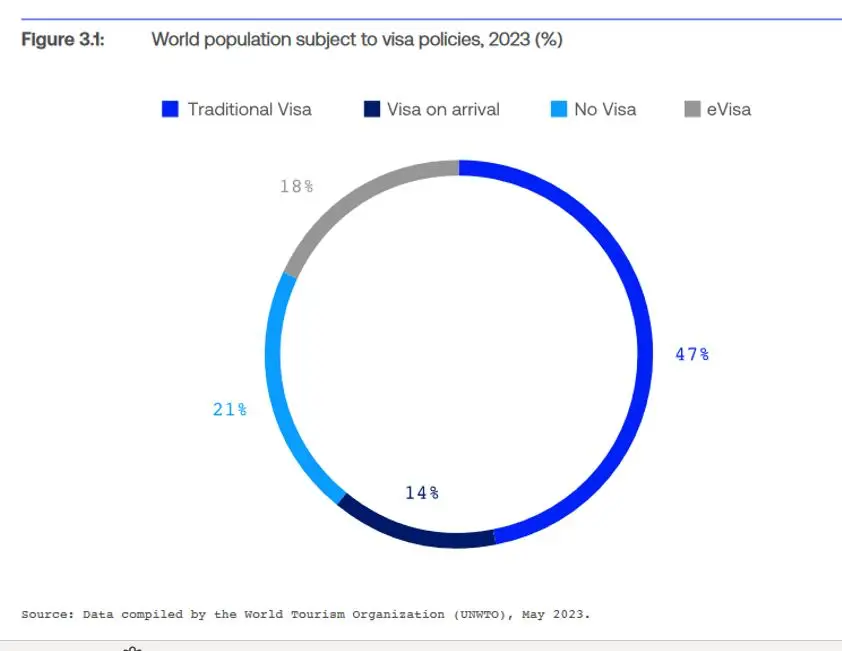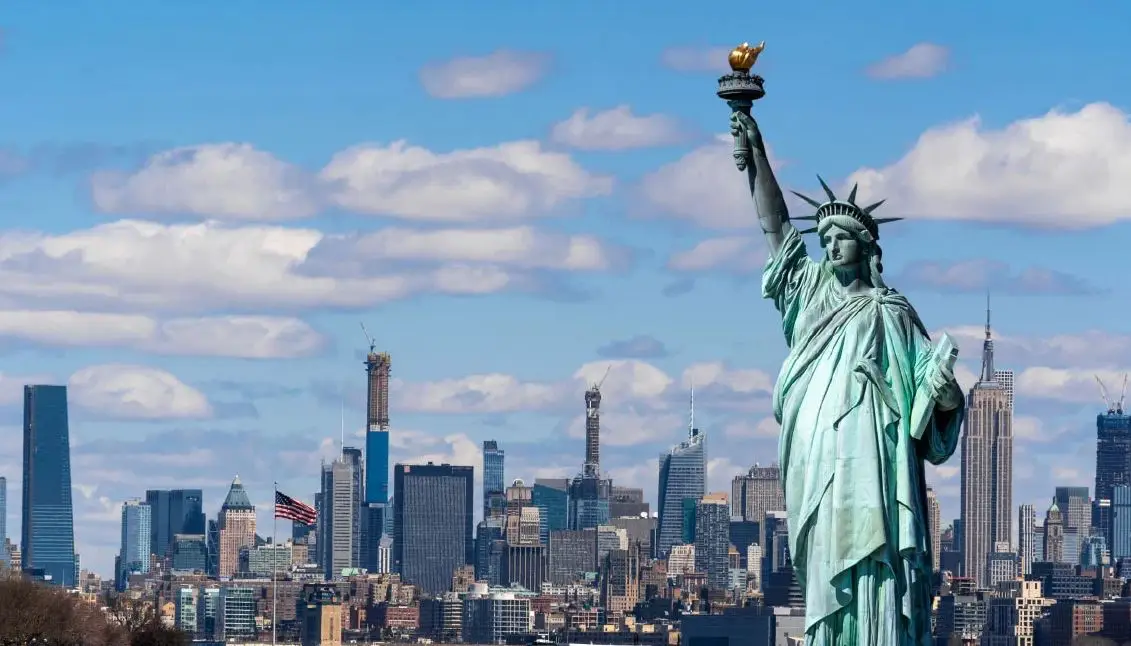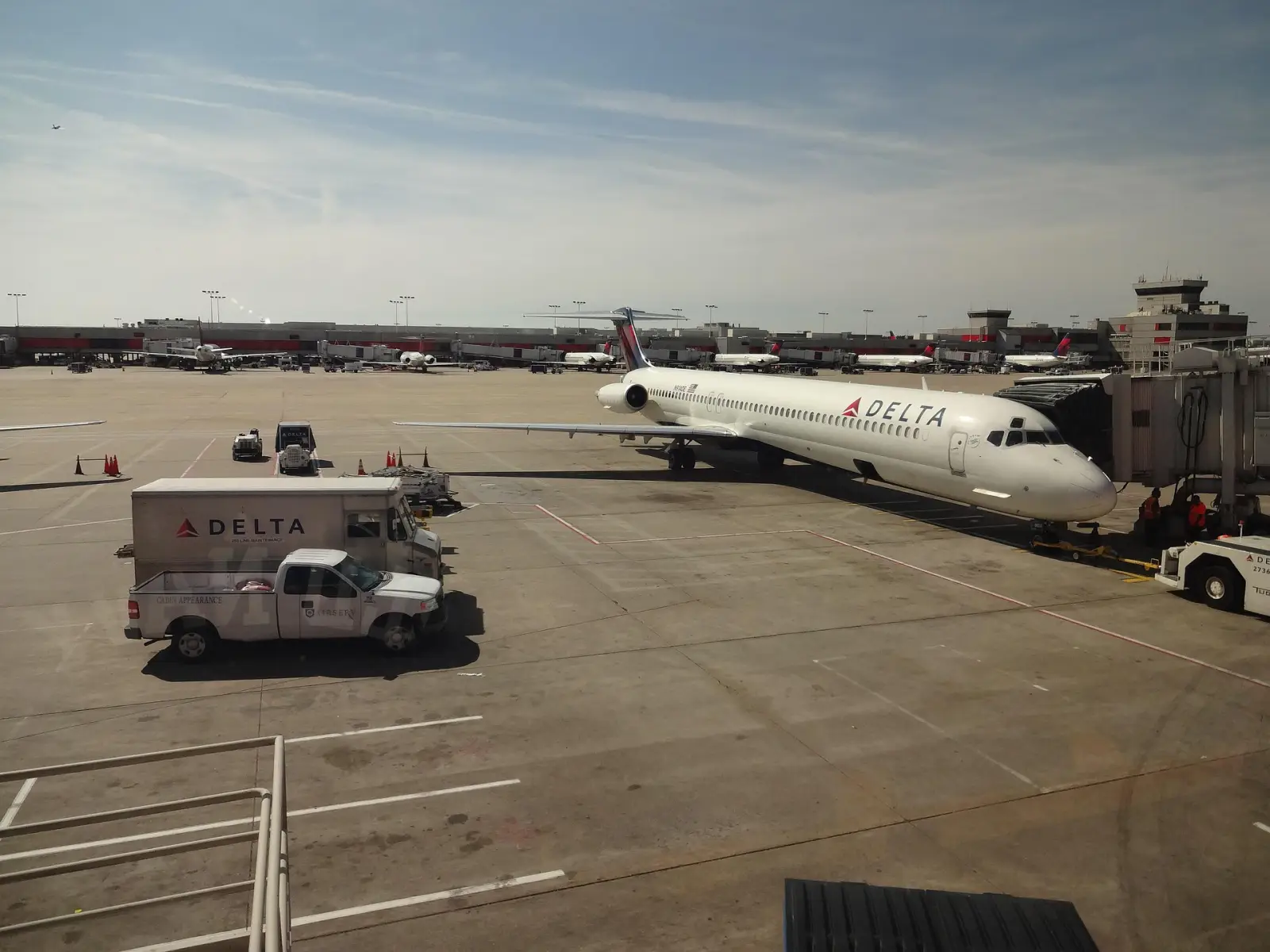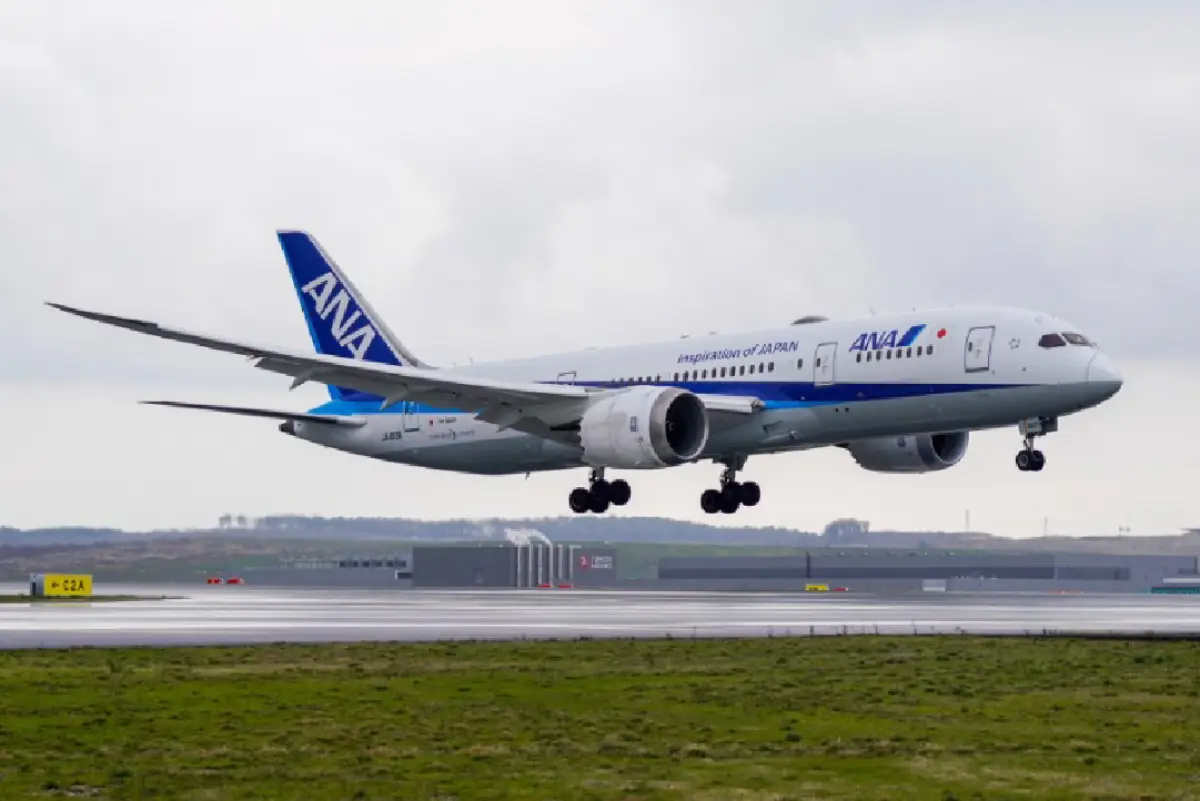UN Tourism has released its latest Tourism Visa Openness report on global visa policies, revealing continuous shifts in international travel regulations.
The report sheds light on the evolving landscape of travel facilitation. It includes the Tourism Visa Openness Index that measures the degree to which destinations facilitate tourism and how open a country is in terms of visa facilitation for tourism purposes. Also, mobility scores are included to indicate to the extent to which citizens around the world are subject to visa policies, as well as an in-depth analysis of the reciprocity of visa policies.

Here are some of the key findings.
Regional Openness Scores:
- Return to Pre-pandemic openness: Destinations’ openness to international travel has rebounded to pre-pandemic levels following the lifting of COVID-19 related travel restrictions.
- Decline in traditional visa requirements: The trend over time indicates that fewer people worldwide require a traditional visa to travel., falling from 77% in 2008 to 59% in 2018, and then to 47% in 2023.
- Visa-exempt travel: Only 21% of the world population do not need any form of visa, an increase from 17% in 2008 and 20% in 2018.
- Visa on arrival: 14% of the world population can apply for visa on arrival, an increase from 6% in 2008. and 15% in 2018.
- eVisas: The use of electronic visas (eVisas) has increased sixfold from 3% to 18%
The report looks at visa regulations for tourism by region, highlighting:
- Asia and the Pacific had the highest openness score of all world regions. The highest levels of open reciprocity within the economic surveyed are found in the Schengen area.
- The most restrictive regions remain Central and North Africa, North America and Northern and Western Europe.
- South Asia and West Africa are the subregions that have seen the greatest increase in openness since the last UNWTO report in 2018
- eVisa programmes are prevalent in West and East Africa (36%) and South Asia (31%), while North Africa, Central America, Northern and Western Europe do not offer eVisas
- Visa exemptions are most common in the Caribbean (45%) and in Central America (31%).
- Visa on arrival policies are comparatively common in East Africa (46%), South Asia (38%), South-East Asia (36%) and West Africa (32%).
- Progress in visa facilitation is observed in the Middle East, where the percentage of world population requiring a traditional visa fell from 71% in 2015 to 57% in 2023. Reciprocal visa exemption among members of the Gulf Cooperation Council (GCC) has increased from 2% in 2018 to 87% in 2023. The GCC countries will roll out a unified Gulf tourist visa by 2025, which will allow visa holders to travel across the six Gulf countries (Bahrain, Kuwait, Oman, Qatar, Saudi Arabia, and the United Arab Emirates)
- Traditional visa requirements are most prevalent in North America (84%), North Africa (79%), followed by the Western and Northern European subregions and North East Asia, all with rates above 70%.
Recommendations for streamlined travel
The report underscores the pivotal role of visa policy improvements in fostering tourism growth. Key recommendations include increased integration of tourism perspectives into visa strategies, targeted visa-exemption programs for low-risk traveler markets and expanded visa on arrival facilities. In addition, clear communication on visa policies is vital, along with a streamlined visa application process, accelerated processing times and optimized entry procedures for an enhanced visitor experience.
Breakdown by region
The Americas
With 33% of the world’s population able to enter without a visa, this region has the highest rate of visa exemptions compared to others. Yet, a substantial 53% still need to secure a traditional visa before departure. North America is the most restrictive subregion on a global scale, allowing a mere 7% of the world’s population visa exempted entry.
In contrast, the Caribbean is recognised as one of the most welcoming subregions, with 45% of people worldwide enjoying visa exempted access. Likewise, countries in Central and South America have eliminated visa requirements for a considerable number of source markets, confirming the Americas’ position as a front-runner in visa facilitation.
Asia and the Pacific
The region continues to pave the way in facilitating international travel. Asia and the Pacific offer visa on arrival options to a quarter of the world’s population, a figure unmatched by any other region. By May 2023, 19% of the world’s population can enter this region without a visa.
A closer look at the subregions reveals that South-East Asia is among the most accommodating areas worldwide. As of 2023, 24% of the global population can enter without a visa, 36% are eligible for a visa on arrival, 19% can apply for an eVisa and only 21% are required to obtain a traditional visa before travelling to South-East Asia.
Europe
European destinations have maintained relatively restrictive visa policies, albeit with some progression in recent years. As of 2023, 26% of the world’s population can enter Europe without a visa, an increase from 22% in 2015. Nonetheless, Europe has the highest demand for traditional visas, with 63% of the global population requiring one for entry, though this is down from 76% in 2015.
Examining subregional visa policies, Northern, Western and Southern/Mediterranean Europe exhibit relatively consistent regulations. The Central/Eastern European subregion has eliminated visa requirements for 26% of the world’s population in 2023, up from 20% in 2018. In the wider European framework, the EU-27 nations show significant openness, especially as they permit 23% of the global population to enter visa-free
Middle East
The Middle East region has made important progress in visa facilitation. In 2015, a significant 71% of the world’s population needed to secure a traditional visa before visiting the Middle East. By May 2023, this figure reduced to 57%. Despite improvements in visa processing, the region maintains the lowest rate of visa exemptions, with only 4% of the global population able to enter without any visa
Africa
From a regional perspective, Africa has made significant progress in visa facilitation. By May 2023, the requirement for a traditional visa to enter Africa has dropped to 33% of the world’s population, down from 45% in 2018.
In December 2023, Kenya’s President announced that a visa will no longer be required for tourists as of January 2024. An electronic travel authorization will be required instead. While North Africa and Central Africa enforce some of the region’s and the world’s most rigorous visa regulations, East Africa stands out as the most welcoming subregion globally. This is particularly due to its visa on arrival policy, which allows 46% of the travellers of the world to obtain a visa upon entry, and its eVisa system, which is available to 36% of international tourists.

















